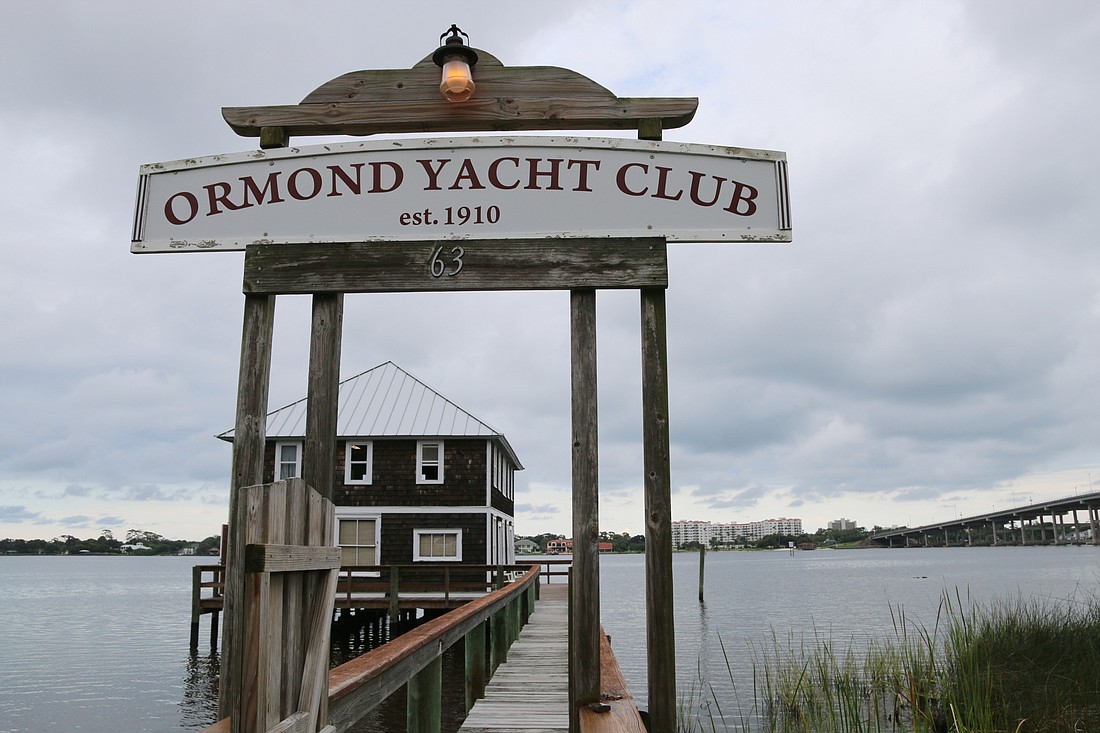- December 13, 2025

Built in 1910 by several founders of the city of Ormond Beach, the Ormond Yacht Club has formed part of over a century's worth of local history, and this year, its membership will start a new tradition: Founder's Day.
To be held on Saturday Oct. 2, by invite only, the estimated 65 members of the OYC are invited former members and living relatives of the founders to participate in a social gathering, to be commemorated by a photo of all attendees, as was done in the 100th anniversary. The current members of the OYC are hoping this will become a regular tradition to help identify the locals who have contributed to the preservation of the building.
OYC member Bill Partington II came up with the idea for Founder's Day while passing through the Hillside Cemetery one day in May. He wondered how many OYC founders — which include John Anderson and Joseph Price — were buried there. Usually, OYC members hold an annual member appreciation event, but Founder's Day will be a way to memorialize local history, starting with the club's 111th anniversary.
“It’s nice to be able to share that knowledge about the history, and we want to pass it on to our children and grandchildren," Partington said.
Who are the OYC members? Men and women who are interested in preserving the building, said OYC President Kevin Callahan.
Over the decades, the club has become a nonprofit historic preservation group. The building is owned by the members, and they rely on dues and their annual banquet for funds.
“We are proud of our members," Callahan said. "We send out a renewal every year and they re-up, and it gives us an operating budget.”
Some may have wondered in the past the OYC building over the Halifax River. Partington and Callahan both spoke about prior comments surrounding the "mystique" of the building.
Originally not on the tax rolls, the OYC was added to the National Register of Historic Places in 2005. The two-story building used to have a boathouse attached via a dock that extended out about 100 yards to it, according to an OYC pamphlet, but it was destroyed during a storm in the 1920s and never replaced.
After all, the boat house never actually housed any large yachts. It held boats, particularly small sailboats and rowboats, and offered slips to guests of Hotel Ormond.
“The water is so shallow that when we get the dock repaired, they have to come in at high tide to do the work," Partington said.
So why is it called the Ormond Yacht Club?
“It’s nice to be able to share that knowledge about the history, and we want to pass it on to our children and grandchildren."
Bill Partington II, OYC member
Callahan has a theory. He once read a memoir from a woman who'd grown up in the area around 1905, and a passage she wrote has stuck with him through the years. She wrote about how beautiful it was to see sailboats coming down the river on their way to attend church, likely the former Ormond Beach Union Church which was across from OYC.
This was after the Halifax River Yacht Club was formed in 1896, and Callahan theorizes this may have played a role in the OYC's name.
“Well, maybe coming out of church one morning, after hearing the news, they might have looked out and said, ‘Here’s our Ormond Yacht Club,'" Callahan said.
Over the years, the OYC has hosted social events, Women's Club meetings, Ormond Beach Historical Society functions and Boy Scout Meetings. On the second floor of the building is a large compass painted by Boy Scouts.
The OYC is still standing today thanks to its dedicated membership who, after the hurricanes of 2004, took risks and repaired and restored the building.
After the hurricanes, the OYC was badly damaged. The floorboards of the first floor were curved upwards and members worried it would fall in the river. The members spent $70,000 to repair the building's pilings.
“We took a chance," Callahan said. "We borrowed money, not knowing if it was going to work. … It was risky, but we were a little dedicated group and people recognized that."
Any wood that couldn't be salvaged was replaced by wood from other historic buildings of the same time period. Members spent days cleaning the grooves of the planks using tung oil applied by toothbrushes. And the work they did then continues to stand the test of time, though as is the case with historic buildings, there is always more maintenance to do.
“We move very slowly on these projects," Partington said.
Preserving a historic building takes passion and a great deal of focus, Callahan said. You have to really want to do it, even if it means doing it yourself or contributing financially for the effort. Perhaps in the future, someone will come up with a use that will open OYC to the community in a way that would be beneficial, Callahan added. But for now, the group is focused on making sure the building can be passed on to the next generation of members.
“Even if [people] don’t know what it is, they would miss it if it was gone," Callahan said. "They would tell their friends and families, ‘That building was there ever since I came here.’”